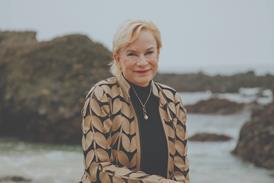Leftward drift: Why Christians are abandoning the faith…and what we can do about it
By  Joel Furches2021-09-07T11:23:00
Joel Furches2021-09-07T11:23:00

Research suggests that Christians leave the faith with far more liberal values than those with which they began. Joel Furches explains more
Related articles
-
 Opinion
OpinionJoshua Harris and Marty Sampson don’t need our condemnation, they need kindness
2019-08-19T00:00:00Z
Dr Peter Harris turned away from Christianity in his late teens, to some degree as a result of the harsh response of Christians to his questions about faith. He explains how we should respond to doubters in the light of two high-profile Christians renouncing their beliefs
-
 Opinion
OpinionBart Campolo says progressive Christians turn into atheists. Maybe he's right
2017-09-25T00:00:00Z By Sam Hailes
Bart Campolo’s process of adjusting his theology to match his experience, shipwrecked his faith. Sam Hailes reports
-
 Magazine Features
Magazine Features5 places you wouldn’t expect to find a chaplain
2025-12-22T12:01:00Z By Emma Fowle
From strip clubs to racecourses: meet the Christians taking God’s presence into places others fear to tread.
More from Opinion
-
 Opinion
OpinionWhat Christians can learn from 2025
2025-12-24T14:33:00Z By Chris Goswami
Chris Goswami looks back at the biggest news stories from 2025, explores how they have impacted the Church and takes a look at the year ahead
-
 Opinion
OpinionMartin Smith: My letter to Gen Z
2025-12-22T16:56:00Z By Martin Smith
Have any generation had so much expectaion placed on their shoulders, asks Martin Smith, or carried so much anxiety? The worship leader and musician offers some words of wisdom to his own children - and all those of their generation - from his own hard-won experience
-
 Opinion
OpinionWhy, as a Christian, I’m joining Jews in lighting Chanukah candles
2025-12-22T10:39:00Z By Rev Peter Ould
As anti-semitism rises around the world, Rev Peter Ould says now is a good time for Christians to demonstrate solidarity with Jews
- Issues
- Topics A-Z
- Writers A-Z
- © 2025 Premier Christianity
Site powered by Webvision Cloud
























